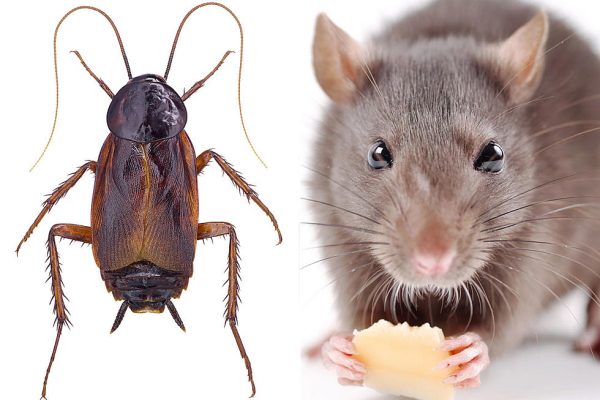Is your dog’s recent struggle with breathing causing you surprise and concern? Are you trying to decipher whether it might be related to allergies or a respiratory infection? There’s no need to fret; we’re here to provide guidance. Distinguishing between these two issues is crucial to ensure the right steps are taken for your cherished furry companion.
In this blog post, we’ll delve into the typical signs associated with each condition and offer practical advice on what veterinarians might suggest if they suspect allergies or infection is behind your dog’s wheezing.
Understanding the Causes of Wheezing in Dogs
Wheezing in dogs can stem from various sources, primarily categorised as respiratory infections and allergies.
Respiratory Infections
These are often caused by bacteria or viruses, leading to airway inflammation and, breathing difficulties and wheezing. Infections can be contracted through contact with infected animals or inhaling infectious particles in the air. For instance, pneumonia, a common infection in dogs, often presents with symptoms like wheezing, coughing, and fatigue.
Allergies
Like humans, dogs can be sensitive to allergens in their environment, food, or certain medications. These allergens trigger an immune response, leading to airway inflammation and wheezing. Common allergens in dogs include pollen, dust mites, mould spores, specific food ingredients, and even flea saliva.
It’s important to note that other conditions, such as heart disease, tracheal collapse, or bronchitis, can also lead to wheezing. Therefore, if your dog is wheezing, it’s crucial to consult a veterinarian for an accurate diagnosis and appropriate treatment.
Distinguishing Between Allergies and Infections
To differentiate between allergies and infections, it’s essential to keenly observe your dog’s behaviour and physical symptoms.
Allergies
Symptoms like sneezing, itching, skin redness, and inflammation often persist over time with allergies. They frequently coincide with specific triggers, such as seasonal changes or substance exposure. Allergic reactions tend to cause your dog to scratch excessively. They may also be accompanied by symptoms like itchy ears, vomiting or diarrhoea (especially regarding food allergies), and red, watery eyes.
Respiratory Infections
Symptoms of infections can come on suddenly and may be accompanied by a fever, loss of appetite, and lethargy. If your dog has a runny nose with green or yellow mucus, it’s more likely a sign of an infection. Infections generally prompt a more systemic reaction and may make your dog seem unwell.
Remember, these are general guidelines, and symptoms can vary for each dog. Therefore, seeking professional advice is the best course of action if your dog suffers from persistent wheezing.
Common Allergy Triggers in Dogs
Allergy triggers in dogs can vary from one pet to another. Environmental allergens like dust mites, mould spores, and pollen can cause respiratory symptoms, including wheezing. Seasonal allergies related to flowering plants or grasses are also common in dogs, similar to “hay fever” in humans.
Food allergies are another significant trigger. Ingredients like wheat, dairy, chicken, beef, or soy are known culprits. Allergic reactions to these ingredients can result in gastrointestinal issues, skin problems, and respiratory distress in sensitive dogs.
Fleas are a significant dog allergen, with many canines allergic to flea saliva. Even a single bite can trigger an allergic reaction, leading to intense itching, skin inflammation, and respiratory symptoms.
Lastly, certain medications can cause allergic reactions in dogs, with penicillin being a common allergy in canines.
Remember that this isn’t an exhaustive list; triggers can vary significantly from dog to dog. Therefore, closely monitor your pet’s response to potential allergens and consult a veterinarian if symptoms persist.
Recognising Symptoms of Bacterial or Viral Infections in Dogs
Bacterial or viral infections in dogs often manifest in various noticeable symptoms:
- Dogs usually appear lethargic, showing reduced interest in activities they usually enjoy.
- They may lose their appetite, leading to noticeable weight loss over time.
- Fever is a common symptom, often accompanied by shivering or unusual panting.
- Respiratory symptoms indicate a respiratory infection, such as a persistent cough, runny nose with yellow or green mucus, and difficulty breathing or wheezing.
- In some cases, dogs may experience vomiting or diarrhoea, and their eyes may appear red and watery.
- In severe cases, these infections can even cause a change in the colour of your dog’s gums, often transitioning from a healthy pink to a pale or yellow hue.
If you notice any of these symptoms, seeking immediate veterinary care to diagnose and treat the infection promptly is critical.
Steps for Diagnosing the Source of Wheezing
Diagnosing the source of wheezing in dogs typically involves several steps taken by the veterinarian:
- The process usually begins with a comprehensive physical examination of the dog and a thorough review of its medical history. Information about symptoms’ onset, duration, severity, and potential allergen exposure or recent illness can provide valuable clues.
- Next, the veterinarian may conduct a series of tests, which could include chest X-rays to check for signs of pneumonia or other respiratory conditions, blood tests to identify any underlying systemic diseases, and special allergy tests like skin prick tests or specific IgE blood tests to determine if an allergy is causing the wheezing.
- If an infection is suspected, a bacterial culture or viral isolation test may be conducted using samples from your dog’s respiratory tract.
- Sometimes, an endoscopy may involve inserting a small camera into your dog’s airways to visually inspect the respiratory tract and potentially identify abnormalities or foreign bodies.
- More advanced imaging methods, such as CT scans or specialist consultations, may be recommended in complex cases where standard tests don’t provide a clear diagnosis.
The key is approaching the process systematically and thoughtfully, as an accurate diagnosis is the first step toward effective treatment.
Treatment Options for Allergies and Infections

Treatment options for allergies and infections in dogs typically involve alleviating the symptoms and addressing the root cause.
Allergies
The primary allergy treatment often includes avoiding the allergen, if identified. This could entail changes in diet, environment, or the use of hypoallergenic products. In severe cases, veterinarians may prescribe antihistamines or corticosteroids to reduce inflammation and itching. For some dogs, allergen-specific immunotherapy, which involves regular injections of small amounts of the allergen to build immunity, may be an option.
Infections
Infections are generally treated with antibiotics or antiviral medications, depending on whether the infection is bacterial or viral. Additionally, supportive care such as hydration therapy and nutritional support can be crucial in helping a sick dog recover.
Regardless of the condition, regular follow-ups with the vet are essential to monitor the dog’s response to treatment and make necessary adjustments. Remember that each dog is unique, and treatment plans are often tailored to the individual dog’s needs and overall health status.
Always consult a qualified veterinarian for guidance concerning your dog’s specific situation. This advice should be distinct from a consultation with a professional vet.
Conclusion
In conclusion, understanding the potential causes of wheezing in your dog, being alert to the symptoms of allergies or infections, and knowing how to respond can make a significant difference in your pet’s health and well-being. Allergies and infections, while common, can often be effectively managed with a prompt and accurate diagnosis, followed by a carefully tailored treatment plan.
Regular check-ups and conversations with your veterinarian will ensure your dog receives the best possible care. Remember, staying vigilant about your dog’s health today can help ensure many more happy, healthy tomorrows.





